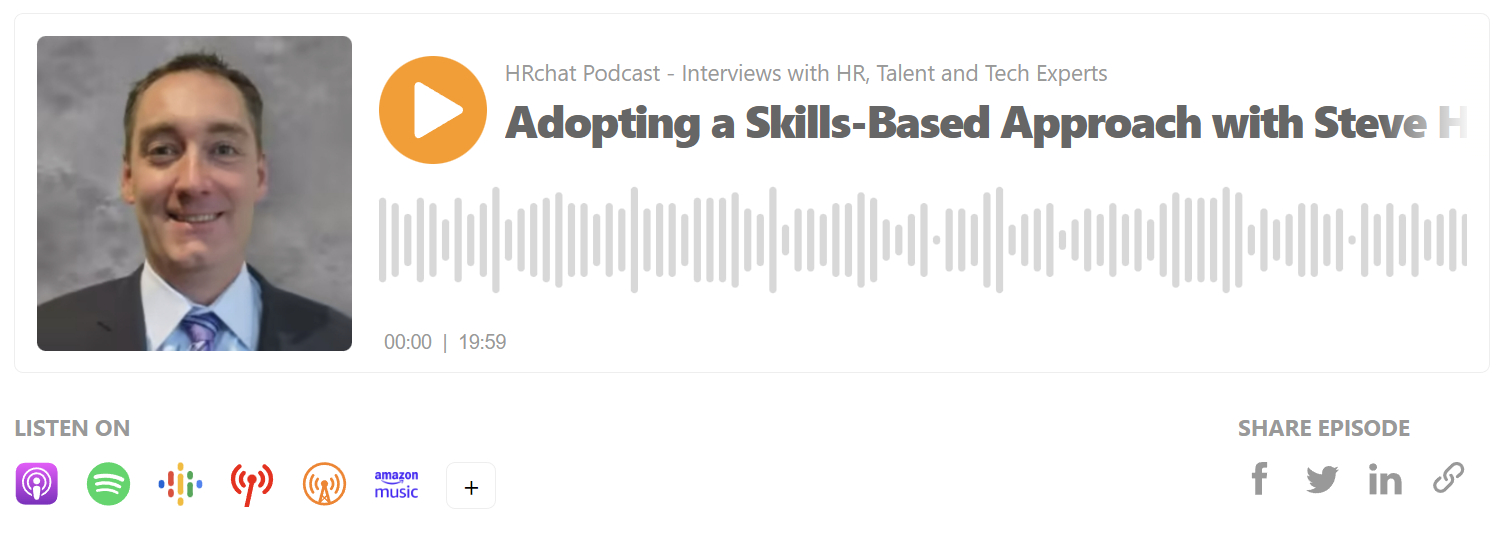
Business is transforming at a faster pace than ever. It is no longer possible, says today’s guest, to hire your way to success or to rely on the locked-in structures of roles and traditional career paths. To ensure your people and their capabilities evolve in support of your business needs you must look deeper and understand people at the level of their skill.
Adopting a Skills-Based Approach can transform your HR function to meet the future needs of business. By focusing on skills rather than traditional roles and hierarchies, HR leaders can create a more agile workforce, increase employee engagement and motivation, and create a more data-driven HR function. This approach can help organizations to attract and retain top talent, reduce turnover, and build a more competitive workforce that is better equipped to meet the challenges of the future.
My guest this time is Steve Holder, Vice President, Solution Advisory at Visier Inc. and speaker at the Agility Reimagined Summit on March 9.
Questions for Steve include:
- Why does your team believe it’s no longer possible to hire your way to success?
- You’re presenting at the Agility Reimagined Summit on March 9. Your session is called Adopting a Skills-Based Approach. How to transform your HR function to meet the future needs of business. In your session, you will cover 3 main topics. Talk to us about each:
- The business imperative behind a skills-based approach
- The challenges of moving to a skills-based approach
- How to start and scale your skills journey effectively
- A skill-based view comes with additional complexity. Why do you think many companies have struggled to get started?
How can adopting a Skills-Based Approach transform your HR function to meet the future needs of business?
Adopting a Skills-Based Approach can transform your HR function to meet the future needs of business by focusing on skills, rather than traditional roles and hierarchies.
A Skills-Based Approach is centered around the idea that skills, rather than job titles, should be the focus of talent management. This approach involves creating a skills taxonomy that identifies the skills needed for different roles within the organization. This allows HR leaders to more accurately assess employee capabilities and create development opportunities that align with the skills needed for future roles.
By adopting a Skills-Based Approach, HR leaders can create a more agile workforce that is better equipped to meet the changing needs of the business. Instead of hiring for specific roles, HR leaders can focus on identifying candidates with the skills needed for the job, regardless of their background or previous experience. This approach allows organizations to tap into a broader talent pool and reduce the risk of skills gaps in the workforce.
The Skills-Based Approach also allows for greater flexibility in workforce planning. By focusing on skills rather than job titles, HR leaders can create more flexible career paths that allow employees to move between roles and departments as their skills develop. This approach can help to retain top talent and reduce turnover, as employees are given the opportunity to develop their skills and take on new challenges within the organization.
In addition, the Skills-Based Approach can help to create a more engaged and motivated workforce. By providing employees with opportunities to develop their skills and advance their careers, HR leaders can increase employee satisfaction and reduce the risk of burnout. This approach can also help to improve employee retention, as employees are more likely to stay with an organization that invests in their professional development.
Finally, the Skills-Based Approach can help to create a more data-driven HR function. By creating a skills taxonomy and tracking employee skills development, HR leaders can better understand the skills gaps within the organization and create targeted development programs to address them. This approach can also help to identify high-potential employees and create development opportunities that align with their career aspirations.

